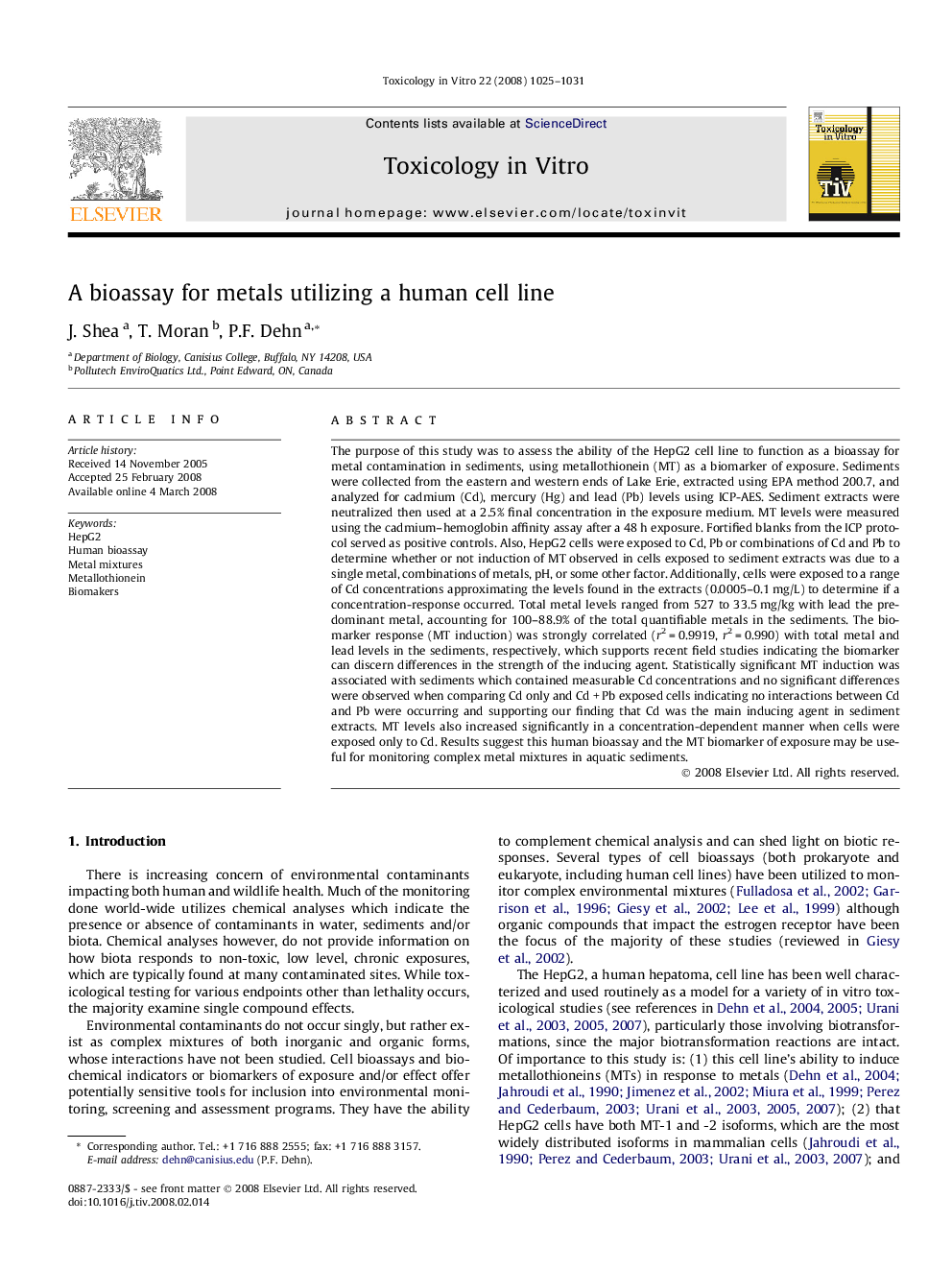| کد مقاله | کد نشریه | سال انتشار | مقاله انگلیسی | نسخه تمام متن |
|---|---|---|---|---|
| 2603393 | 1133818 | 2008 | 7 صفحه PDF | دانلود رایگان |

The purpose of this study was to assess the ability of the HepG2 cell line to function as a bioassay for metal contamination in sediments, using metallothionein (MT) as a biomarker of exposure. Sediments were collected from the eastern and western ends of Lake Erie, extracted using EPA method 200.7, and analyzed for cadmium (Cd), mercury (Hg) and lead (Pb) levels using ICP-AES. Sediment extracts were neutralized then used at a 2.5% final concentration in the exposure medium. MT levels were measured using the cadmium–hemoglobin affinity assay after a 48 h exposure. Fortified blanks from the ICP protocol served as positive controls. Also, HepG2 cells were exposed to Cd, Pb or combinations of Cd and Pb to determine whether or not induction of MT observed in cells exposed to sediment extracts was due to a single metal, combinations of metals, pH, or some other factor. Additionally, cells were exposed to a range of Cd concentrations approximating the levels found in the extracts (0.0005–0.1 mg/L) to determine if a concentration-response occurred. Total metal levels ranged from 527 to 33.5 mg/kg with lead the predominant metal, accounting for 100–88.9% of the total quantifiable metals in the sediments. The biomarker response (MT induction) was strongly correlated (r2 = 0.9919, r2 = 0.990) with total metal and lead levels in the sediments, respectively, which supports recent field studies indicating the biomarker can discern differences in the strength of the inducing agent. Statistically significant MT induction was associated with sediments which contained measurable Cd concentrations and no significant differences were observed when comparing Cd only and Cd + Pb exposed cells indicating no interactions between Cd and Pb were occurring and supporting our finding that Cd was the main inducing agent in sediment extracts. MT levels also increased significantly in a concentration-dependent manner when cells were exposed only to Cd. Results suggest this human bioassay and the MT biomarker of exposure may be useful for monitoring complex metal mixtures in aquatic sediments.
Journal: Toxicology in Vitro - Volume 22, Issue 4, June 2008, Pages 1025–1031